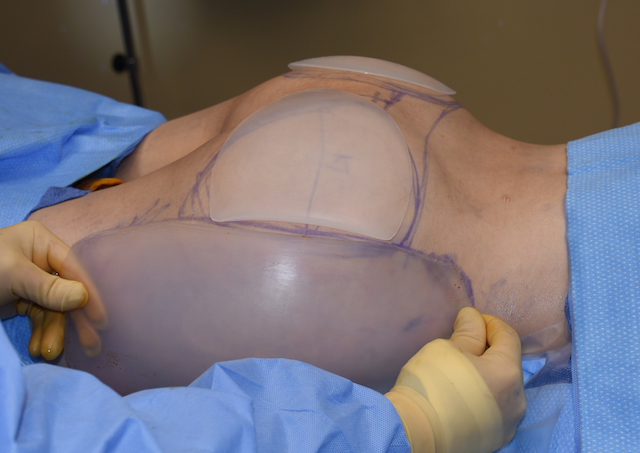As the popularity of buttock augmentation has soared over the past decade, the need for hip augmentation has also arisen. No form of buttock augmentation, whether it is by implants or fat injections, can successfully provide substantial hip augmentation. Buttock implants certainly can not regardless of whether they are even placed in the subfascial tissue plane. If one has enough fat to harvest both the buttock and hips can be injected but, unlike the buttocks, the take of fat in the hip areas is very typically minimal to non-existant.
For reliable and substantial hip augmentation, only implants will suffice. An evolving area of body implants, their shapes and tissue pockets are becoming bette understood by actual clinical experience. Few standard hip implants exist and such preformed implants will not work for everyone. Custom hip implant designs remain the best method to address hip augmentation needs on an individual patient basis. Hip implants can be placed ‘above or below the muscle’ (TFL fascia) but, somewhat similar to buttock implants, that tissue pocket will control the size and shape of the aesthetic hip augmentation outcome.
One of the potential aesthetic problems when buttock and hip implants are placed in the same patient, whether concurrently or in separate procedures, is a visible external demarcation or depression between them. This us understandable given that both implant edges taper and they do not really create a smooth transition. If the buttock and hip implants are placed in deeper pockets this is not an issue but this also creates a less significant and higher buttock-hip augmentation line.

It is too early after surgery to say if this is an effective approach that satisfactorily addresses that aesthetic hip contour issue. But like the evolving area of hip implants in general, new implant designs and techniques are needed to refine and improve clinical outcomes.
Dr. Barry Eppley
Indianapolis, Indiana



